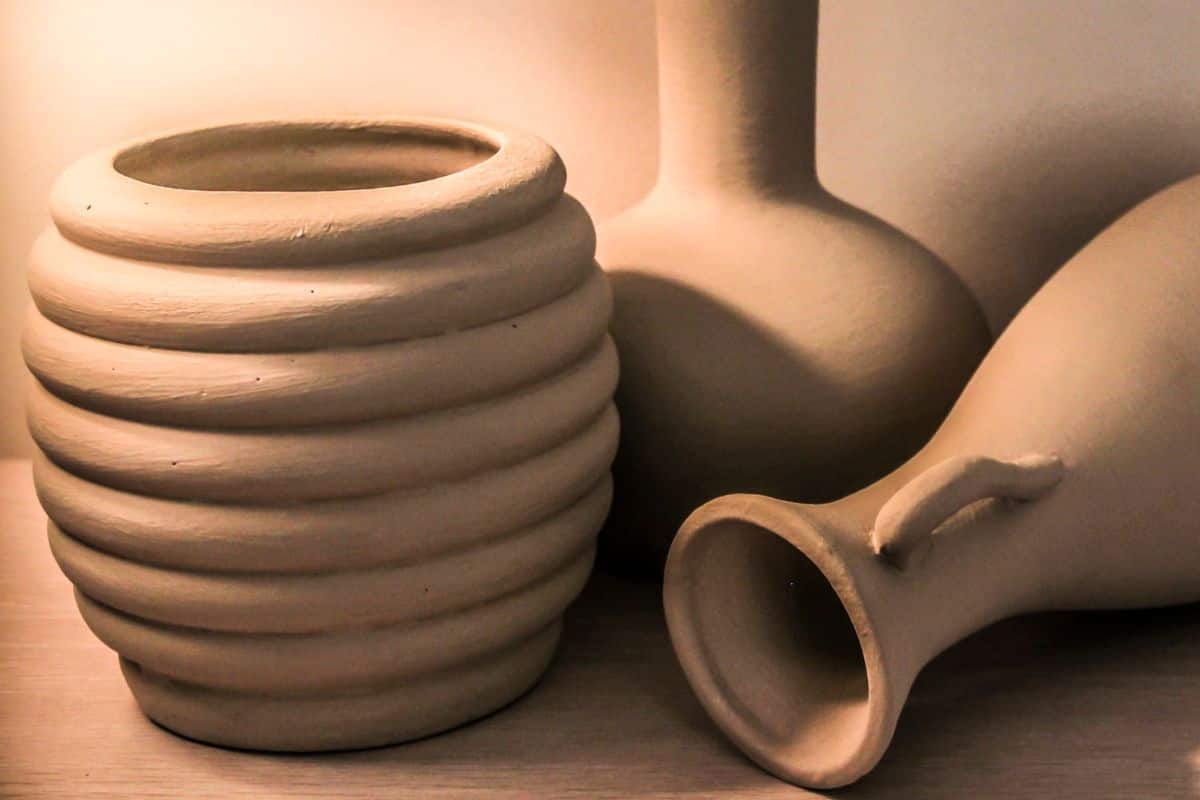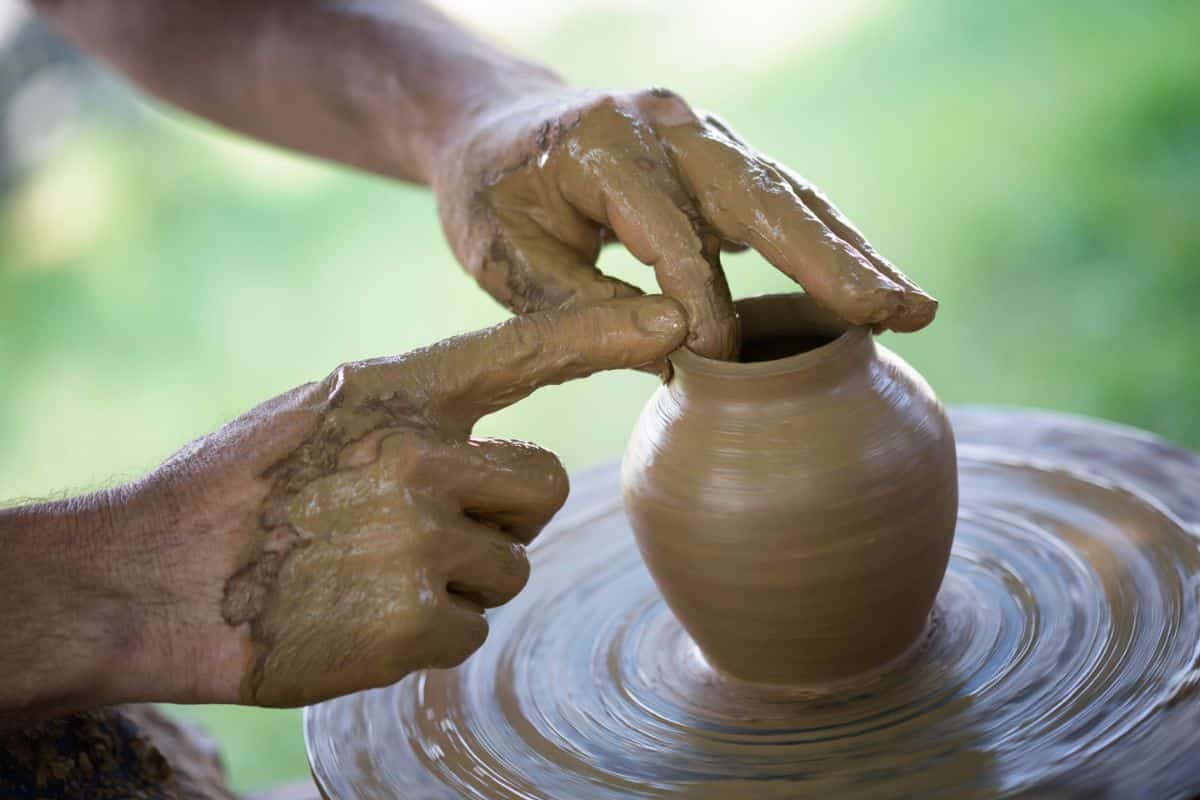It is the argument of many that the human civilization that has the most influence on our society today is the ancient Egyptians. This is a culture that has lasted for over 3,000 years and is marked by its art cultivation.
The biggest example of this is Ancient Egyptian pottery. This type of pottery is a significant aspect of the history of ceramic art even today.
In this article, we will discuss everything you need to know about Ancient Egyptian pottery, including Egyptian ceramic history, how their pottery was made, and the significance of the pottery that was made in Ancient Egypt.
So, if this ultimate guide is of interest to you, then read on for more!
The Different Periods Of Ancient Egypt
Overall, there were 30 different dynasties and 9 different periods in Ancient Egypt.
The nine periods are as follows:
- Old Kingdom
- First Intermediate Period
- Middle Kingdom
- Second Intermediate Period
- High Priests of Amun
- Third Intermediate Period
- Late Period
- Macedonian Period
- Ptolemaic Period
The priests of Ancient Egypt were also often historians, and Manetho, one of these priests, wrote the text The History of Modern Egypt. This text is still being used by scholars today to learn about ancient Egypt and to put a date to both events and artifacts.
When Did Ancient Egyptians Begin Making Pottery?
Ancient Egyptians began making pottery in 4,000 B.C.E. Therefore, Ancient Egyptian pottery dates back to a time even before the Old Kingdom.
The very first Ancient Egyptian pottery was made by hand, with a technique known as the hand-building pottery technique. Many of the pieces we have discovered over the years were made using the technique known as coil hand-building.
As for decorative design, Ancient Egyptians took inspiration from the Ancient Greeks, incorporating simple, geometric patterns onto their pottery.
What Is The Other Name For Ancient Egyptian Pottery?
You may see Ancient Egyptian pottery being referred to by another name, Egyptian Faience. Faience is the term for self-glazing or efflorescence glazing.
Here, the salt present within the clay material will rise to the surface at the same time the clay body dries. Here, the glaze will naturally develop after the firing of the vessel.
Egyptian Faience will create pottery of bright colors, such as cobalt or turquoise.
The Clay Used In Ancient Egyptian Pottery
There were two types of clay used to make pottery in Ancient Egypt. They were Marl clay and Nile clay.
Both of these types of clay actually resulted in a way of being able to classify wares, also known as the Vienna System. The system will inspect the size of both non-organic and organic parts of the pottery fabric.
When it comes to Ancient Egyptian pottery, there are actually 10 classifications present in the place where the clay was discovered.
Every year, the river Nile is flooded, and with this flood comes clay and silt. You can still find this material in modern-day Ethiopia, high up in the mountains.
The clay of the Nile contains a lot of iron oxide and silicon. It will dry a red or brown color.
Meanwhile, Marl clay comes from the desert and is known by another name, desert clay. However, it can also be found along the Nile. A way to distinguish it from Nile clay is its color because Marl clay is typically white thanks to the limestone deposits present.
What Are The Ways In Which Ancient Egyptians Made Pottery?
Let’s check out the ways Ancient Egyptians made pottery in further detail!
Handbuilding
As previously mentioned Ancient Egyptians would hand make all of their pottery, The hand-building technique consisted of forming clay with both your hands and some simple tools.
Then, they would move on to coil hand-building techniques. Here, coils were stacked until they formed a pot.
From there, these pots would be completed with a simple decorative pattern reminiscent of the Ancient Greeks.
Ancient Egyptian Pottery Wheel
The pottery wheel was first used in Ancient Egypt between 2600 B.C.E. and 2500 B.C.E, considered to be the Old Kingdom’s golden age.
This wheel resulted in pottery gaining a smoother finish, which resulted in mass production.
Firing Ancient Egyptian Pottery
Just like many other things in the Ancient world, pottery kilns were primitive. One of the earliest structures of pottery kilns was just pits in the ground.
The pieces of pottery that needed firing were placed on blocks with the fuel placed underneath. Here, you would find a stoke hole situated at the side of the kiln. This is what would permit the attendant to keep the kiln nice and warm.
Since then, the technology of kilns has developed to allow for some more celebrated potter types, such as Faience, to exist. Kilns that could produce Faience are called furnaces by archeologists because they could reach extremely high temperatures.
What Kind Of Pottery Did Ancient Egyptian Potters Make?
Ancient Egyptian potters made so many different types of pottery! Let’s check them out in more detail below!
Ancient Egyptian Pottery: Functional
Ancient Egyptian pottery was often functional. Functional pottery would often be used to store liquids, foods, or to help generally with daily tasks.
Functional pottery was often decorated in a way that was reminiscent of the Ancient Greeks.
Ancient Egyptian Pottery: Religious
The relationship between belief and art in Ancient Egypt ran deep, and pottery was no exception to this. Khnum, the god of fertility, was upheld for bringing life into the world, whether it was through humans, the fields, the harvest, and other deities.
There were many religious texts that bestowed titles such as “Divine Potter” to Khnum. Ancient Egyptians believed that Khnum would form babies out of clay, and then place them into their mother’s womb.
Therefore, parallels were drawn between the duties of the gods and the ordinary potter, and this can be seen in the type of pottery that was made for religious purposes.
Much Ancient Egyptian pottery was made for religious ceremonies. This type of pottery would hold fragrant liquids and oils. Religious pottery is also represented by figures of Egyptian gods.
Additionally, pottery was used in burials for wealthy individuals, and many beautiful pieces of pottery have been preserved in these tombs.
Ancient Egyptian Pottery Styles
Let’s check out Ancient Egyptian pottery styles in more detail!
Enameled Pottery
First, we have enameled pottery. This is a decorative style that permitted the use of inlaid ornamental work. Enameled pottery was either green or blue in color.
These days, you will hear this type of pottery being referred to as enameling, overglaze enamels, or overglaze decoration.
Ancient Egyptian Relief Carving
This was a way of decorating the pottery. There are two different types of Egyptian relief carving:
- High
- Low
High relief carvings stood off the pot and were raised designs. Low relief carvings are used to describe a cut into the clay’s surface in order to showcase the design.
Ancient Egyptian Faience
As well as being a term for Ancient Egyptian pottery, Faience is also a type of pottery style that was used by Ancient Egyptian potters to highlight human or animal figures.
The term Faience comes from the clay that was used at the time. As previously mentioned, it is a type of self-glazing where the clay dries while the salt comes to its surface.
The vessel is fired, and from here, a glaze will develop naturally. In Ancient Egypt, this Faience would result in cobalt or turquoise-colored pottery.
Final Thoughts
Pottery has been around for thousands and thousands of years. Ancient Egyptian pottery existed before the first recorded period of Ancient Egypt, the Old Kingdom.
Pottery was first made by hand using a technique called hand-building, which involved some small tools. Coil hand-building was used to stack coils until they made a pot, and they were decorated with an Ancient Greek-like geometric pattern.
Then, the pottery wheel was used throughout the Old Kingdom’s golden age and resulted in pottery with a smoother finish.
Ancient Egyptian pottery had two main functions. They were used functionally to hold both liquids and foods, and they were also used in religious ceremonies, celebrations, and burials. This is because they were closely connected to Khnum, the god of fertility.
The pottery of this time was styled in different ways, by enameling, relief carving, or Faience.
We hope this article tells you all you need to know about pottery in Ancient Egypt!








